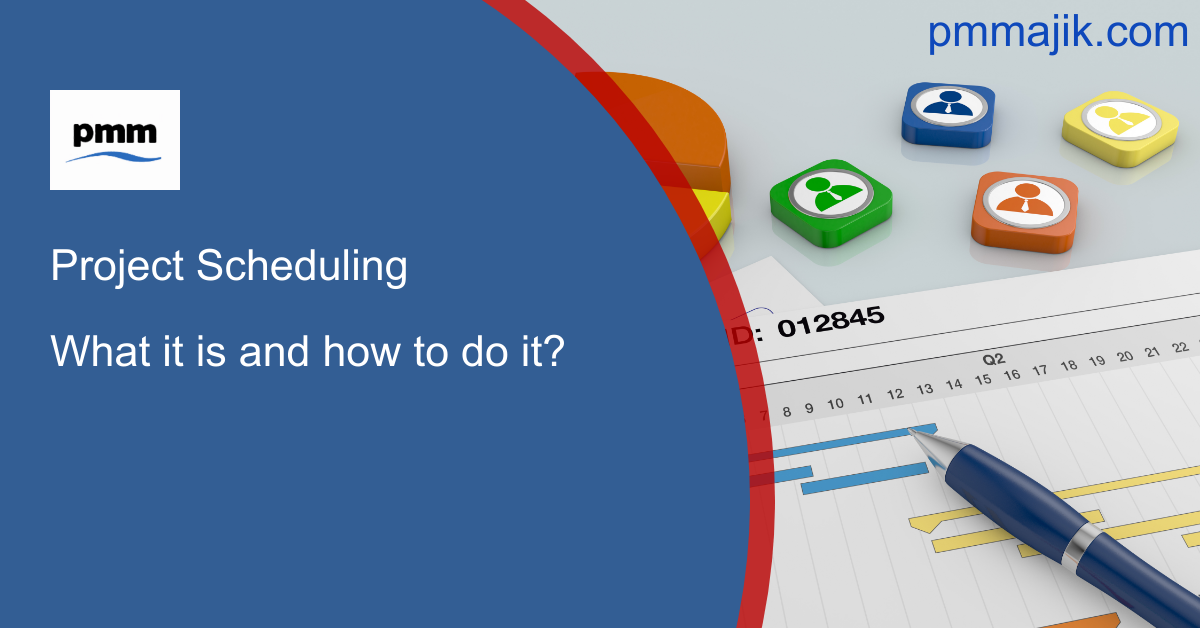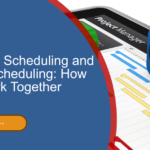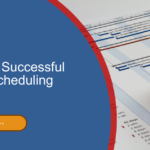Every project has a deadline, and your project management office (PMO) likely has on-time delivery of projects as one of its KPIs. Understanding what project scheduling is how to get it right on a process level will help the projects in your office hit their delivery dates.
The task of scheduling a project usually falls to a project manager, but it’s up to your PMO to facilitate an effective scheduling process. It’s also possible that team members from your PMO will be asked for information by project managers so they can schedule better.
To help your PMO create and sustain the best project scheduling process possible, we’re going to look at:
- Exactly what project scheduling is
- The seven processes involved in time management
- Different types of project scheduling and tools
- Why you need project scheduling
- Our tips to get project scheduling perfected
What is project scheduling?
Project scheduling is the process of defining the activities, deliverables, and milestones for a project and putting them on a timeline so you can track delivery against a deadline.
A project schedule gives a start and end date. As well as helping the project team and the client know when the project will be finished, it also provides valuable data for a PMO to measure success.
Within a project schedule, information about:
- Human resources
- Tools and software
- Space
- Money
And everything else a project will need is put in a timeline with dates to confirm when everything will be needed.
What’s the difference between a project plan and a project schedule?
A project plan has information about how a project will be completed, such as the people that need to be brought in, the methodology that’ll be used, and how deliverables will be transferred.
A project schedule takes that plan and puts a timeline to it. It defines when actions will be taken in the context of the information that’s in the project plan.
What are the seven processes of time management?
Creating a project scheduling process for managers to follow is all about time management. In project management, there are seven steps of time management which need to be followed to create an effective project schedule.
- Plan schedule management – this is the stage where you create the project plan.
- Define project activities – know exactly what needs to be done for delivery.
- Sequence project activities – understand what order activities need to be in.
- Estimate resources – know who and what you need, and when.
- Estimate durations – have a broad understanding of how long each activity takes.
- Develop project schedule – plug all this information into a calendar.
- Control project schedule – actively manage the schedule to deliver on time.
We’ll look at what each of the processes look like in an upcoming post so you can ensure your PMO can support each step of project scheduling.
What are the different types of project scheduling?
When a project manager creates a project schedule, there should be three documents extrapolated from it. These are:
- A master schedule that your PMO, the client, and other stakeholders can track and see the overall progress. It’s broad and simplified.
- A milestone or summary schedule to more closely track if the project is on track to hitting its deadlines. It’s useful for the PMO business analyst and the project manager.
- A detailed schedule with each activity logged and described. This is for the project team and the project manager to know exactly what’s coming next.
Different project methodologies will present this information in different ways. Probably the most common project management methodology is waterfall, and this would use a Gantt chart to track a project schedule.
Using Kanban methodology, this information is tracked on a Kanban board. If you’re using Scrum methodology, then you’ll create a sprint timeline to show the project schedule.
What are the benefits of project scheduling?
Having a robust project scheduling process emanating from your PMO means you can:
- Track and report data easily
- Communicate needs and deadlines to project workers easily
- Understand the resource needs across projects
- Visualise how each task interacts with each other
- Identify backlogs and other issues quickly
What’s the key to having a strong project scheduling process?
Our top seven tips for a good project scheduling process are:
- Invite stakeholder input
- Use data from past projects
- Understand project risks in detail
- Plan for vacations and sickness
- Define the project’s critical path – more on this in a future post
- Record why you made your scheduling decisions
- Have manageable milestones in your schedule
We’ll go into much more detail on each of these in another post.
How to do project scheduling
Knowing about project scheduling, what is it and how to do it, will help your PMO support projects and project managers to hit their delivery deadlines and your PMO to hit KPIs.






